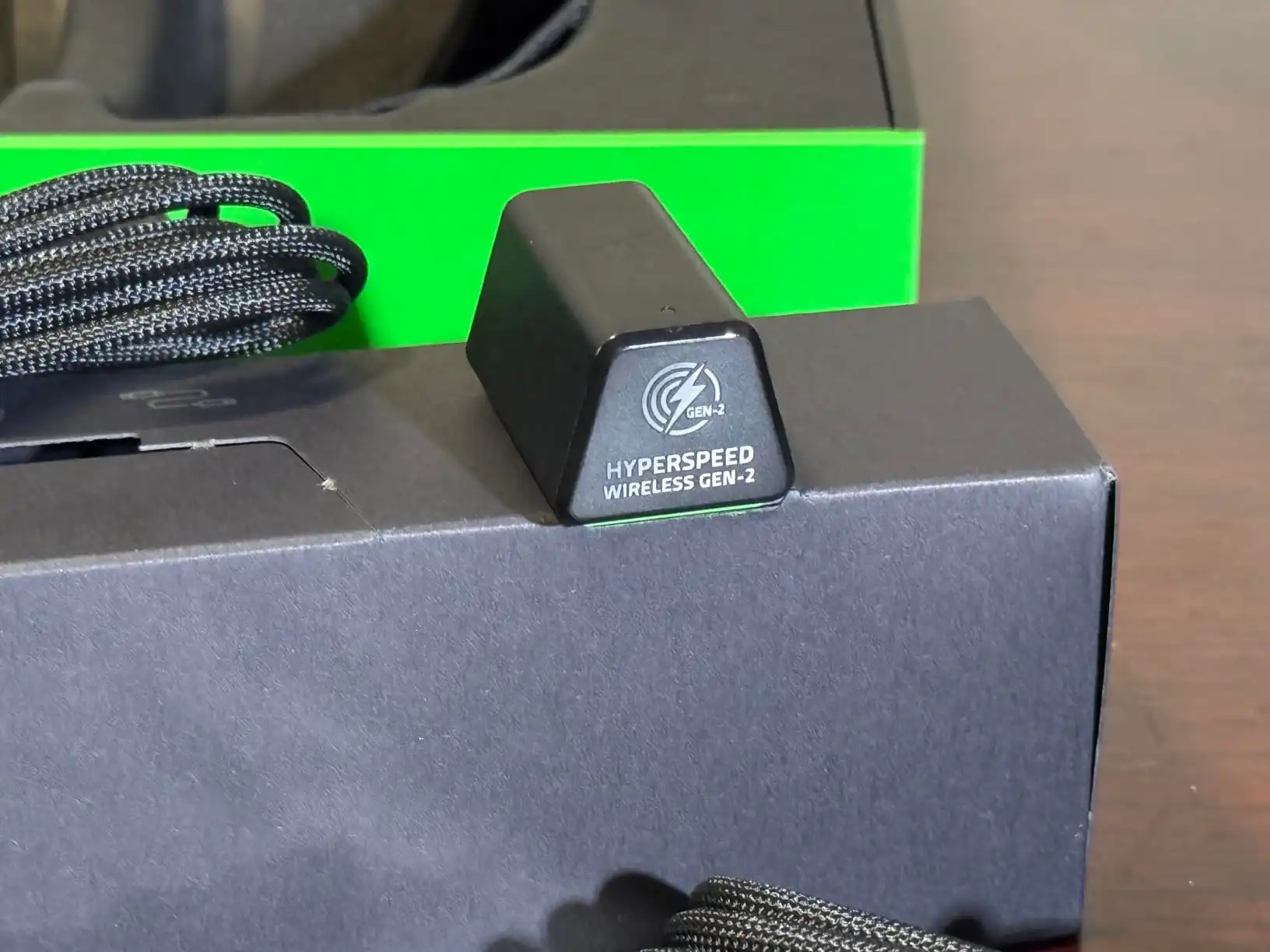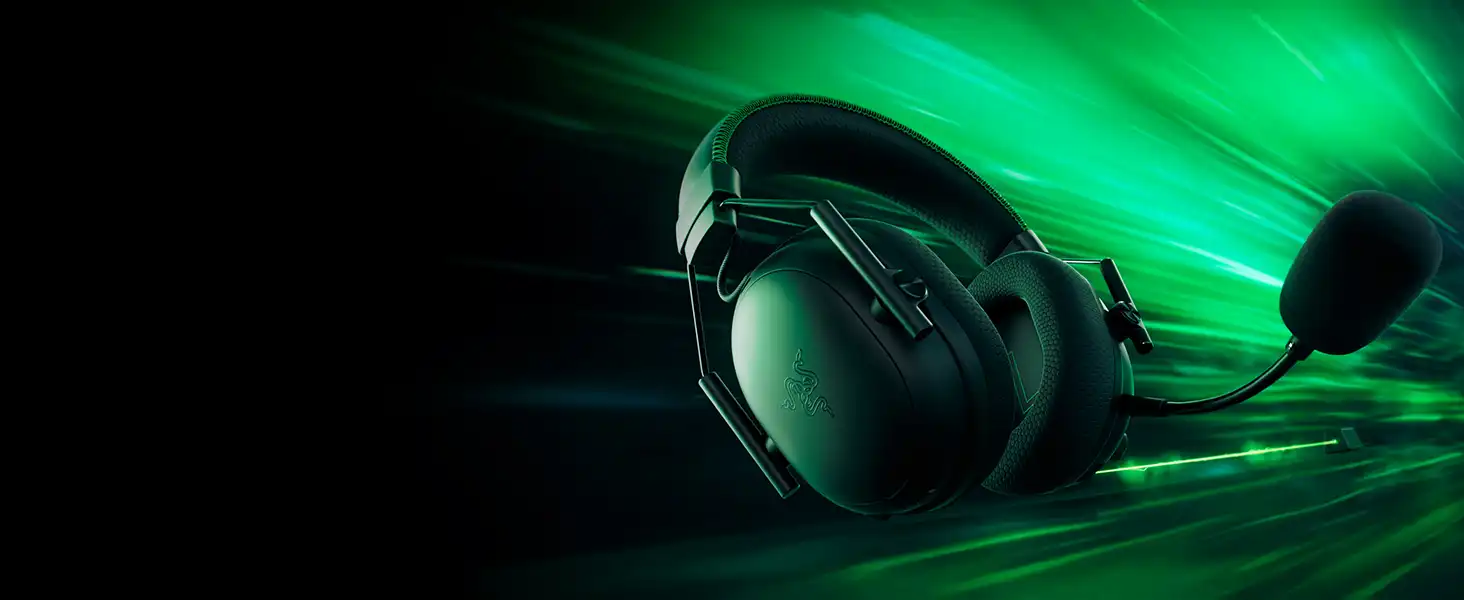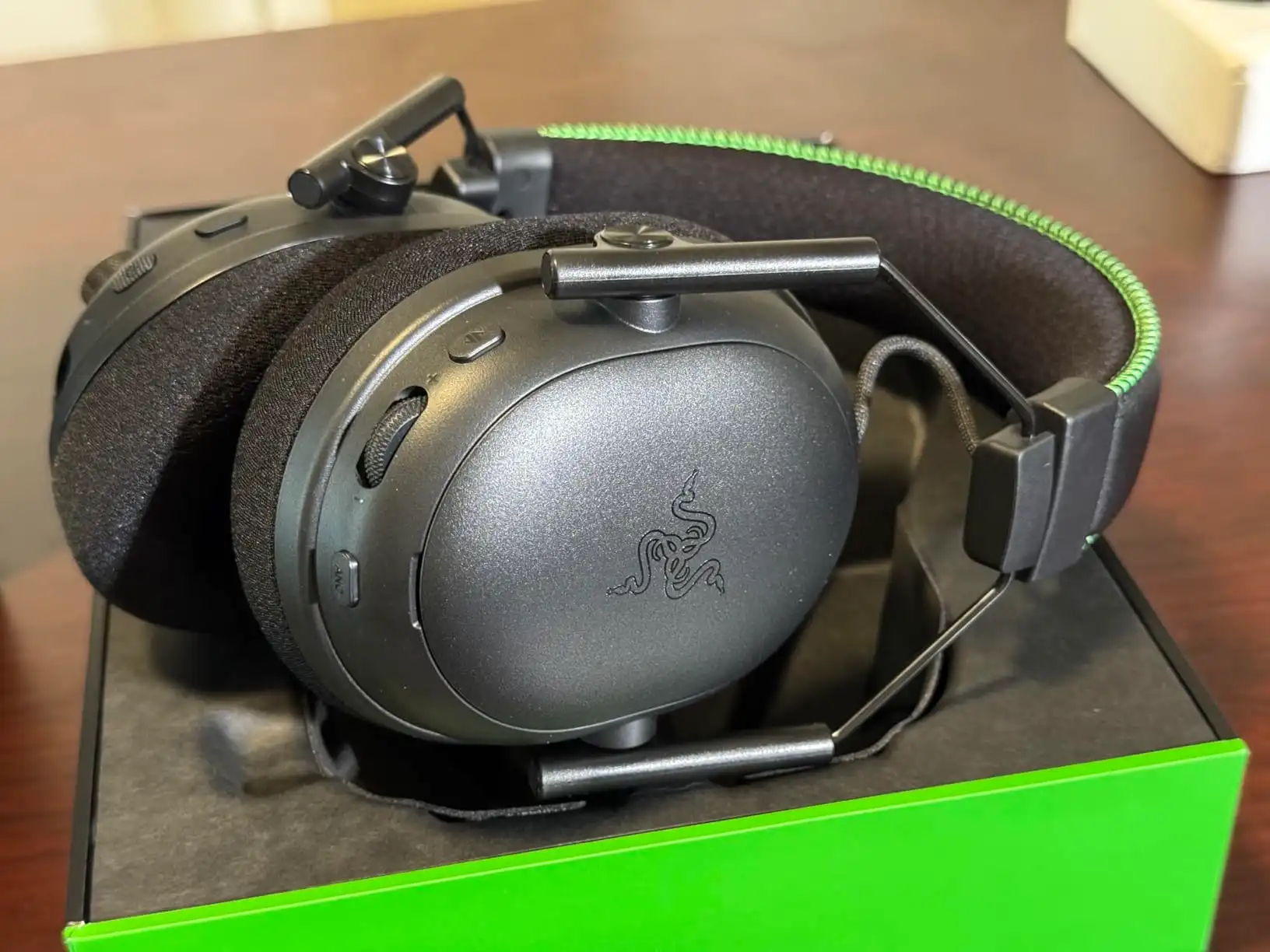Shopping around for wireless headsets can be confusing, and there’s lots to consider. While there’s plenty of reading on those questions, we’re here to give you a quick and easy breakdown of Razer HyperSpeed Gen-2, Razer wireless audio, and ultra-low latency headset technology. It’s a 2.4 GHz adaptive connection that delivers a clean, consistent signal with almost no delay. It applies frequency-hopping logic so that movement, actions, and effects feel instant, not delayed. In terms of stability, it’s not bad — there are plenty of affordable systems — but better results can be found if you’re willing to spend.
It’s refreshing to hear a wireless link that acknowledges what its target market needs. Rather than a power-heavy connection, the tuning stays mostly balanced, with an emphasis on speed and control that makes transmission clear and responsive. Connection recovery is good at a medium distance, allowing you to maintain signal without dropouts. It’s not as effective as it could be when the range is crowded, but compared to other formats at this price range, performance is above average.
What Is Razer HyperSpeed Gen-2 Wireless
Most headsets use dynamic 2.4 GHz transmitters, also known as single-channel radios. A fixed carrier creates a static link. This interacts with the data stream’s timing, which is forced to move back and forth with the applied signal. The transceiver is attached to a chipset which amplifies and processes the packets, and thus, sound is produced. Razer HyperSpeed Gen-2 maps those signals into an adaptive spectrum and delivers data cues faster to maintain synchronization. The result is a clean, bright transmission that keeps gameplay and sound perfectly aligned.

You can still use Bluetooth or wired processors. It’s not as effective as it could be on every setup, though. The connection can feel narrow on some devices. Stability is good at a medium distance, allowing you to maintain clear signal, but gauging range isn’t as easy as it could be, as everything stays quite close.
Razer BlackShark V3 Pro (2025 Edition) and Razer Barracuda X Gen-2 are frequently used as examples. The frame is clean, lightweight, and can withstand twisting with next to no issues, while the dongle and software allow mode switching and EQ control. Dual connectivity and long battery life make them practical, and they remain well suited to Razer HyperSpeed Gen-2 performance.
How HyperSpeed Gen-2 Improves on the First Generation
Most wireless systems use a fixed-band design. HyperSpeed Gen-2 expands on this by scanning channels two-thousand times per second. It reacts instantly to interference and maintains a consistent link without audible clicks or pops. The transmission feels smoother and keeps the delay lower than before.
Power control is also improved. The chipset uses a refined duty-cycle controller that balances energy draw and signal strength. As a result, the headset lasts longer on a single charge while keeping the same clarity. The connection remains bright and detailed even under heavy wireless traffic.
It’s not an entirely new system, but it feels more deliberate. HyperSpeed Gen-2 pairs faster, reconnects instantly, and remains compatible with Razer Synapse updates. For most gamers, that consistency makes a noticeable difference in everyday use.
Razer HyperSpeed Gen-2 vs Gen-1 vs Bluetooth
| Feature | HyperSpeed Gen-2 | Gen-1 / Bluetooth |
| Average Latency | ≈ 0.29 ms (measured) | ≈ 0.46 ms / 20–60 ms typical |
| Connection Type | Adaptive 2.4 GHz multi-channel | Fixed band or single link |
| Power Efficiency | Controlled duty cycle | Higher drain under load |
| Range (Line of Sight) | Up to 20 m | 12–15 m average |
| Audio Quality | Uncompressed 48 kHz stream | Lossy Bluetooth profiles |
| Real-World Delay | ≈ 10 ms average | ≈ 60 ms average |
Why Latency Matters in Competitive Gaming
Much like the tuning of gaming headsets, Razer HyperSpeed Gen-2 has a very specific purpose. Rather than boosting sound pressure or bass, it focuses on time accuracy. Keeping delay below 10 ms ensures that movement, gunfire, and voice lines occur exactly when they should.
Here, precision is the advantage. Footsteps and reloads line up perfectly with player motion. The small cues that define spatial awareness — doors, impact, reload sounds — feel sharp and immediate. The second generation improves response time, channel stability, and distance control.
It competes with Logitech Lightspeed and SteelSeries Quantum 2.0, yet remains smoother in dense signal environments. It’s not as effective as it could be in every scenario, though. In some locations, reflection and interference can cause slight tone shift. Keep the range clear, and the link performs exceptionally well.
The cost-to-performance ratio is favorable. For most users, Razer HyperSpeed Gen-2 is the perfect middle ground — the low latency of a wired connection without losing wireless freedom.
Inside the Tech — How HyperSpeed Gen-2 Works
The chipset operates through a dual-stream structure: one lane for audio and another for input data. This means that commands, chat signals, and controls don’t interrupt the main audio stream. A fine-tuned codec manages packet order to prevent jitter, keeping playback consistent even at long range.

Firmware updates run through Razer Synapse, which calibrates latency, power, and pairing. The application remains lightweight, and updates install automatically once the dongle is detected. It’s a simple, seamless process that keeps the connection optimized across devices.
You can still use Bluetooth or wired modes on compatible headsets. It’s not as effective as the dedicated 2.4 GHz link, but switching remains easy. For travel, the hybrid model keeps both wireless types available.
Comparison With Other Wireless Systems
When compared with Logitech Lightspeed and SteelSeries Quantum 2.0, Razer HyperSpeed Gen-2 maintains a cleaner response under load. Logitech’s model favors signal compression for stability, while SteelSeries uses dual-link balancing to minimize drops. HyperSpeed instead uses adaptive frequency management, shifting instantly across open bands to sustain connection without compression artifacts.
Bluetooth remains the slowest option. Even modern codecs like aptX Adaptive and LDAC cannot match the sub-10 ms range achieved by dedicated 2.4 GHz hardware. The difference is especially clear in FPS and competitive shooters, where every frame counts.
Supported Devices and Compatibility
Razer HyperSpeed Gen-2 works with PC, Xbox Series X|S, PlayStation 5, and Nintendo Switch (in docked mode). Dual connectivity allows switching between 2.4 GHz and Bluetooth modes without re-pairing. The included dongle provides automatic device recognition and fast pairing within seconds.

Headsets like the Razer BlackShark V3 Pro (2025 Edition) and Barracuda X Gen-2 demonstrate this versatility well. Their frames are light and stable, with enough range to cover a full room. Battery runtime remains long, and both models integrate easily with Synapse for firmware updates.
Future of Wireless Gaming Audio
Wireless transmission continues to evolve. The next stage will likely combine HyperSpeed technology with Snapdragon Sound or LE Audio, balancing latency and codec flexibility. AI tuning will adjust performance dynamically, lowering delay when needed and saving power during passive use.
HyperSpeed Gen-2 is built to support those future upgrades. It stands as the foundation for what wireless gaming can become — responsive, precise, and ready for adaptive processing.
Final Thoughts
I’m impressed with how far Razer HyperSpeed Gen-2 has progressed in refining wireless speed. It’s fast, consistent, and clean, with latency so low it feels wired. The system doesn’t chase visual gimmicks or artificial enhancements — it simply performs.
For players who value timing and accuracy, this technology delivers the best mix of reliability and comfort. It’s the connection standard that wireless gaming will be judged by for years to come.